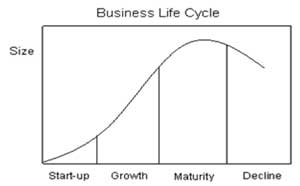No marketer should be complacent about branding. Even the most stable, long-lived brands can become irrelevant—and quickly. To remain vital, a brand must have a consistent flow of audience insight, gained through multiple touchpoints. One of the most effective: the live event.
Virtual events have grown popular as a means of connecting with target audiences as the technology behind them improves and as marketers look for ways to trim already-stretched event budgets. However, recent data disputes their effectiveness—or, at the very least, supports the importance of face-to-face networking.
Face-to-face meetings and events should be an anchor in any brand's marketing mix. When done right, live events are a successful technique for marketing, employee engagement, and networking. The problem is perception: So many organizations settle for outdated, unimaginative, and, quite frankly, boring events... that the reputation of live events has suffered.
Live events are still vital to the branding mix, but at many companies, they need to be reinvented. What's needed is an innovation mindset when approaching event design.
Advice abounds about the need for organizations to innovate (Amazon has 54,403 books on the subject). Executives are seeking ways to innovate employee benefits, products, and office layouts. Meetings and events must be added to that list.
The following five tips will help you and your organization think differently about events and break out of corporate brand paralysis.
1. Blow up your annual event
An event lifecycle is no different from that of a business or product. After the Maturity phase comes the Decline phase. No matter how traditionally popular, all events need an occasional refresh before they are in decline.
Before your next event, spend some quality time deconstructing the event. What is the objective? What does success look like? How can you best show off the brand?
Consider all of the elements of the event, and whether they support an experience that resonates and conveys the essence of the brand. For example: should there be a series of speeches from the CEO and other executives, or would a two-minute, exciting video be more effective? Does there have to be a seated dinner with full service, or would a family-style dinner at each table better encourage individual connections?
There should be no sacred cows when planning events.
2. Personalize, personalize, personalize
Companies spend enormous amounts of money and resources on print ads, marketing pieces, and websites. Yet, for their event invitations, everything changes. Many marketers forget that the invitation is not only a marketing piece for the event but also an important representation of the brand. Receiving an invitation is personal.
The person who opens that envelope can be excited, annoyed, or apathetic. The invitation must be vetted for misspelled names, and the personal touch is demonstrated by invitations that are hand-stamped and are interesting enough to get through a gatekeeper. Part of that is the conveyance of the brand's present and future, not its past. Keep it fresh!
3. Heighten the senses
Unlike most forms of marketing, events offer the opportunity to engage all the senses. Senses trigger a heightened emotional response. By successfully engaging all five senses during an event, companies have the opportunity to create a stronger memory of its brand, and memory influences loyalty ("The Sensory Potential").
Sense of smell is the trickiest: Too many conflicting smells confuse the nose. Scent should be used sparingly to be effective. A whiff of coconut as guests enter a tropical theme party will attach a positive memory to the event, compared with a roomful of sharply scented lilies.
4. Don't be predictable
Many events have become formulaic. A fundraising event has an "ask" at the end. The CEO makes a "thank you for coming" speech at an open house. Why? Because at some point it was successful, and at this point it is expected. But should it be?
Having the CEO speak during such an informal setting is similar to the cake-cutting at a wedding: It is a signal for people to leave. It is instead far more effective for a leader to work the room during an open house. He or she has the opportunity to really connect with guests. It creates a different memory for attendees. They feel special and leave with a positive brand impression.
5. Be a spectacular host
Few would treat guests in their homes the way they treat guests at an event. People forget the importance of the entire guest experience.
The most basic processes should to be reviewed during the planning of an event. Checking people in sounds simple enough, but few ever get it right. A guest arrives and stands in long line only to find her name missing from the list. She is asked to handwrite her name on a tag, now setting her apart from 98% of the other guests with typed nametags. Not exactly the best first impression. Next she goes to the bar, where she also stands in a long line. The last impression of the event is retrieving her car from the valet. It is late, it has been a long day, and now she gets to stand outside awkwardly awaiting her car for 10 minutes.
Every moment of a live event should be carefully examined from the guest experience point of view. Start at the moment of arrival and envision yourself as a guest. Your brand is "on stage" every step of the way. There are no "small" details.
By designing a unique, resonant experience and by taking care of any pitfalls in advance, your brand will leave the impression you want, long after the event is over.




